The Last Hope of the Great White Shark?
Former reality-show skipper Chris Fischer has revolutionized shark science—with a daring system for catching the beasts alive and a radical new research-funding model. During an expedition off the coast of Chile that was interrupted by an undersea earthquake, our man wonders if this guy is the next Cousteau or a corporate-sponsored hype machine.
New perk: Easily find new routes and hidden gems, upcoming running events, and more near you. Your weekly Local Running Newsletter has everything you need to lace up! .
Nothing livens up a slow day of fishing like a tsunami warning.
On April 1, 2014, the Ocearch, a 126-foot vessel rigged to capture large sharks alive, was anchored near Alejandro Selkirk Island, a small piece of land about 500 miles off the Chilean coast. Twenty-five people were on board, among them biologists, filmmakers, social-media experts, a former war photographer who was once held hostage in Iraq, a retired federal agent, and a long-haired Chilean fisherman with a Viking tattooed on his shoulder. Everyone was looking for dorsal fins, but no one had seen so much as a long shadow for days. The yellowtail heads strung off the back of the boat broke down slowly, dissolving into the South Pacific Ocean and attracting nothing.
The ship’s owner, a 46-year-old former reality-TV host named , stood on deck wearing a serious expression and his customary outfit: Caterpillar shirt and cap, Costa shades, jeans. He was abnormally quiet. His nonprofit research organization—also called —had been at sea on Expedition Chile for more than a week, and its team of fishermen, led by a burly captain named Brett McBride, whom Fischer calls “the real-life Aquaman,” had hooked and lost just one mako. Fischer believed that shark finners had emptied the area out, and he was despondent. “I’ve never, ever seen anything like this,” he’d said the previous day. “This is what we’ve been talking about all these years. A sharkless ocean.”
Fischer frequently uses this sort of language—absolutes and gravitas—which he honed in his previous career. From 2008 to 2012, his boat was a traveling TV set, with Fischer and McBride capturing white sharks for the National Geographic and History Channels. Since his shows ended, he has engineered a unique and controversial model for marine research in which the Ocearch acts as a roving field station for shark scientists, with the vast majority of the funding for the operation provided by corporate sponsors. Ocearch’s crew catch the sharks and allow scientists the rare opportunity to collect blood samples and affix GPS-enabled tracking tags. Sponsors, meanwhile, receive high-impact exposure by associating themselves with a terrifying and charismatic predator. Coverage is crucial, so Fischer crams as many journalists aboard as possible during the expeditions. Last year the group was mentioned some 3,000 times in media outlets worldwide. Images accompanying most of those stories showed Fischer and his team standing over prone great whites while clad in gear made by Caterpillar, the $56 billion construction-equipment giant and Ocearch’s primary backer.
The sun slipped behind the cliffs off the starboard side, and Fischer went to pour a drink. On deck, people sipped vodka and Sprite, soaking up the last of the day’s warmth and the country music cranking over the sound system. Up in the galley, Luis, a Panamanian chef and weight-lifting enthusiast, was roasting a turkey. It was cocktail hour at the edge of the world.
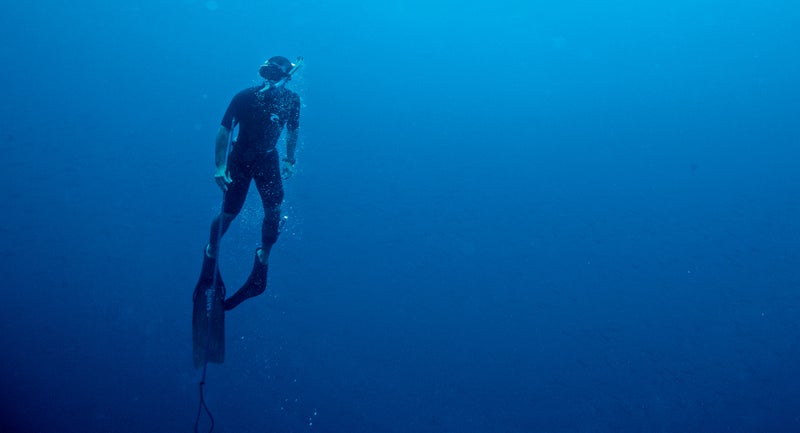
Selkirk, or Isla Mas Afuera (“farther out”) as it’s known, is the westernmost point in the Juan Fernández archipelago. A seven-mile-long, egg-shaped former penal colony with sheer volcanic walls, it’s populated by an endemic species of fur seal, hundreds of invasive goats, a number of rare birds, and about 40 seasonal lobster-fishing families. Selkirk is technically a national park, but access to the outside world is limited to a seawater-hardened rope tow extending into the ocean from a rocky beach at the foot of a canyon. The nearest airstrip, pier, and phone are 100 miles to the east, on Robinson Crusoe Island, a relative hub with about 880 residents.
A motor hummed in: the Contender, a smaller fishing vessel Fischer’s team uses to hook sharks before leading them to the mother ship. The fishermen on the Contender jumped aboard the Ocearch and hauled up two massive yellowtail. Todd Goggins, the first mate, a laconic 29-year-old former high school baseball star from Florida, lay down next to one of the fish. It was nearly as tall as him. Everyone laughed. Rudy Ortiz Aravena, a 37-year-old fisherman and lodge owner from Crusoe Island who was Ocearch’s unofficial ambassador, started to dance.
[quote]“It seems to me that is wholly playing to the camera,” says marine ecologist and science writer Rick MacPherson of Ocearch's system for lifting sharks out of the water. “If more viewership means more support, great. But if you're doing it for sexy visuals, cop to it, man.”[/quote]
A crew member came on deck, poured a drink, and cracked a joke. Then he approached Fischer: “Fisch, we’ve got an earthquake off the coast, an 8.2. There’s a tsunami warning. It’s time for us to go.”
Chile’s government had ordered evacuations of around a million people in coastal areas, including the port city of Valparaiso, Easter Island, and the entire Juan Fernández archipelago, which in 2010 had been that killed 16.
Fischer and McBride huddled to make a quick plan, then began shouting instructions at the crew. Some people assembled life jackets and water bottles. Forty minutes later, everyone was gathered in the galley as the ship rumbled out to sea, trying to reach deep water before the wave arrived. The engineer, Vince Cislo, assigned everyone a number in the event of a worst-case scenario. One by one we called them out. Voices were strained, faces pale. “If we do this again,” he said, “we’re going by number, not name. If it’s abandon ship, Chris makes the call. Good luck.”
Ocearch had come to Chile primarily to catch and study sharks, but that was just the beginning. The group would create GPS tracks of the tagged fish for its website and produce short films to broadcast a swashbuckling brand of research, brought to you by Caterpillar, Costa, and Yeti, the cooler maker. To board Fischer’s vessel is to enter a world of branded exploration and multiplatform content distribution that, depending on your point of view, represents either the future of conservation or the next vanity project for a lapsed reality-TV host.
Fischer’s admirers, who include top scientists from the U.S. and South Africa, see him as a hard-working and compelling advocate able to deliver the save-the-oceans message to a mainstream audience while funding research expeditions that would otherwise be inaccessible to grant-starved marine biologists. His fans throw around terms like “visionary,” “tireless,” and “passionate.”
Scientists who work with Ocearch say that the unparalleled access to great whites, as well as the media attention, is transforming the field of shark ecology. “These guys are making us throw out everything we learned about these animals,” says , director of shark research at Florida’s , whom Fischer considers a mentor. “They’ve created a generation of people who have fallen in love with this kind of work.”
Fischer’s detractors, on the other hand, deride him as an “actor” and “big-game fisherman.” A vitriolic contingent of online haters allege that Ocearch’s method for affixing data transmitters to sharks—which involves raising the fish out of the water on a wooden platform with its forklift—harms the animals. James Moskito, a cage-dive operator on Mexico’s Guadalupe Island, a white shark destination where Fischer worked from 2007 to 2009, calls him “by far the worst” person in the white shark world, because, he told me, “Ocearch is killing sharks.” Other critics suggest that Fischer’s conservation-by-Caterpillar approach leads him to prioritize hype over science. “It’s sensationalist television wearing a facade of science,” says a prominent ocean cinematographer who has declined to work with Ocearch. “It’s catch-and-release fishing by people who want to catch big sharks that are now protected.”
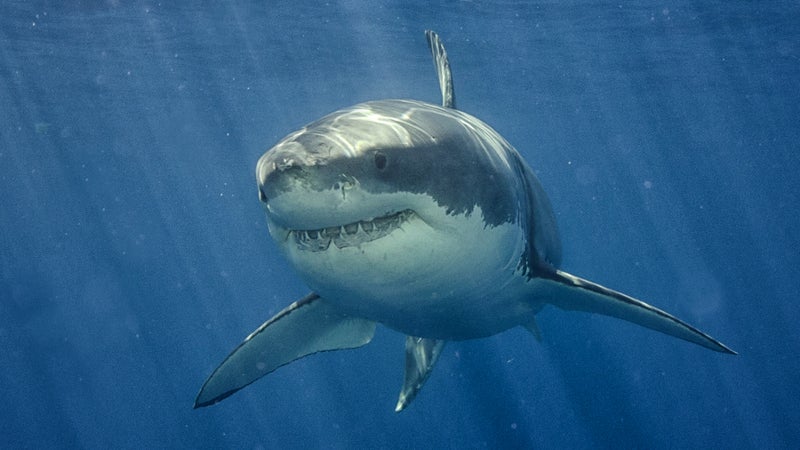
Fischer is unapologetic. He maintains that Ocearch, with its $3 million annual budget, is the last best hope for large-shark research, which is incredibly expensive to conduct. “I didn’t realize how disruptive we’d be, but the fact of the matter is the system is broken,” he says. “The institutional approach is not getting it done.” Fischer opens his ship to a wide range of scientists, frequently pays for their food and shark tags, and offers on the Ocearch website. “It’s open, inclusive, data driven, and ocean first,” Fischer says.
The number of people who are on board the Ocearch—journalists, photographers, filmmakers, Caterpillar executives—is constantly vacillating. “Mi Barco es tu barco,” Fischer tells his guests. “If you see something you want, take it.” People sleep where they can: on deck, on floors. McBride, who is a big man, often crashes on a couch. “Chris thinks everyone should be welcome,” one staff member told me, wearily.
Fischer sees the rotating milieu as a blessing. “We can force collaboration,” he says, “because this is the only place people are able to get their hands on a live [white shark]. There’s no ask other than to collaborate.” Fischer likes to point out the surprising dearth of knowledge about sharks—scientists don’t know with any certainty how many are alive or where they breed, for example—and how endangered they are. He frequently spits out alarming facts: A quarter-million sharks died today. A hundred million were killed last year. As he explains it, Ocearch’s model is “entirely selfless.”
Still, he doesn’t lack personal ambition. The first time I met Fischer, he told me that he had “set out on a course to become the Cousteau of our time.” Scientists don’t usually gravitate toward that kind of bombast. But biologists fighting for grant money aren’t often offered free boat rides to the world’s top shark-gathering spots, either. No one has attempted corporate-backed field research on this scale with an animal as alluring as a great white.
“I don’t see many other Chris Fischers out there,” says , a colleague of Hueter’s who has worked with Ocearch. “Forget marine science. I mean in life. His vision, his energy. I mean, to look at a ship like the Ocearch and say, ‘I think we could use this to tag large sharks’—it’s insane!”
Fischer's first gig was a far cry from Jacques Cousteau: he sold soda. Fischer grew up in a prominent Louisville, Kentucky, family, and when he was just 12, he helped his three older brothers and their dad start a beverage distribution business called Servend. (One brother, Greg, is now Louisville’s mayor.) Fischer got a B.S. in business from Indiana University, and after graduating he ran Servend’s Asia operations from California. In 1999, when he was 29, his family sold Servend for $73 million. Fischer did what any single, ocean-loving, newly minted millionaire would do. He went fishing, buying a 72-foot vessel he named the Go Fisch.
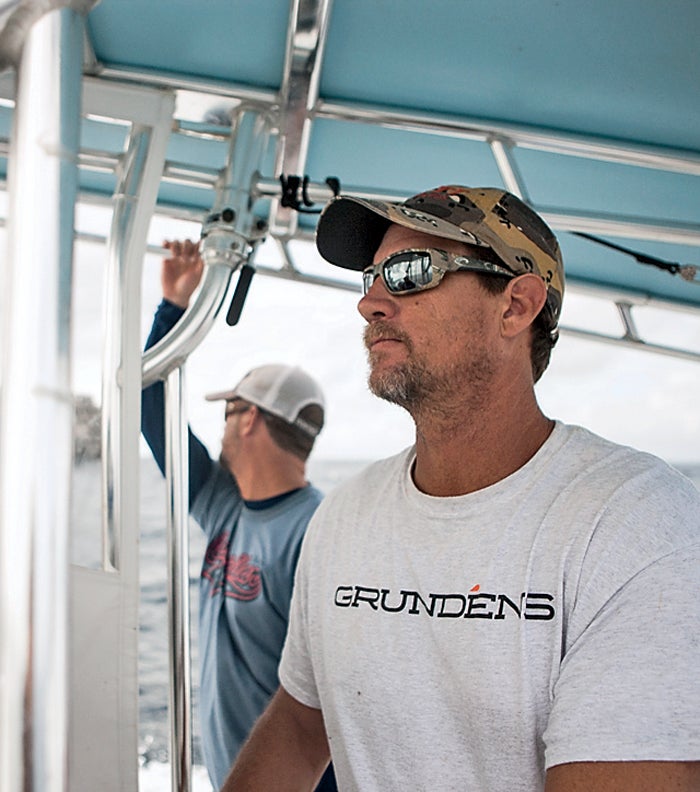
In 2000, he created a production company and bought airtime on ESPN2 for a reality show he called Offshore ���ϳԹ���s. The formula was straightforward: McBride drives the boat, Fischer catches fish, a chef cooks it. They pumped out 188 episodes, with some incorporating Fischer’s wife, Melissa, and their two young daughters. Red Lobster sponsored the show, and President George W. Bush hopped on board for an episode in Chesapeake Bay to promote a striped bass protection order he’d recently signed. In the spring of 2007, Fischer was in Costa Rica when he spotted a docked Bering Sea crabber with a custom forklift. He arranged to meet the owner, made a handshake agreement, and bought the vessel. He’d upgraded to the proverbial bigger boat.
That fall, Fischer met with a biologist named , who was researching white sharks at Guadalupe Island, an aggregation site off Mexico’s Pacific coast. Domeier wanted to use a GPS device to track their behavior, but doing so would require lifting the fish out of the water, since it had to be bolted to the dorsal fin. Most shark tags are affixed by harpoon and work in one of two ways, either by transmitting an underwater acoustic signal to submerged receivers, or by collecting data while hanging off the fish by a metal wire, which gradually corrodes and pops off. Acoustic tags tell you when a shark is near a buoy, while recovered pop-offs allow scientists to examine a fish’s migratory history, like old E-ZPass records. Instead, Domeier wanted to use SPOT tags (for smart position and temperature), which send out coordinates every time they break the surface of the ocean, allowing for real-time location tracking. Could Fischer raise the animals in his forklift? asked Domeier. Absolutely, Fischer said. There was just one condition: cameras would be rolling.
[quote]“I don't see many other Chris Fischers out there,” says Nick Whitney, of Florida's Mote Marine Laboratory. “I mean, to look at a ship like the Ocearch and say, ‘I think we could use this to tag large sharks’—it's insane![/quote]
Soon they were rumbling out to Guadalupe Island in the crabber. There was no proven system for catching a great white, so they improvised. For fishing line they used thick rope, to which they attached a series of buoys, so it wouldn’t sink. At the end of the rope was a braided wire, then a steel chain connected to a large hook baited with tuna. Once they hooked up, they’d battle the shark at the surface with the aid of the buoys until it could be led onto the crabber’s wooden platform like a leashed dog.
The first attempt went poorly: a giant shark pulled the rope and three buoys beneath the boat and, as Fischer put it, “destroyed the biggest tackle on earth.” What they needed was a way to quickly add more buoys once the animal was at the surface, positioned close enough to keep the shark from diving but far enough away to prevent the buoys from being chomped. McBride jury-rigged a fix with a butter knife, which he attached to the chain just above the hook. That way, once they had a shark on the line, he could bring a boat alongside the fish and clip on more buoys with carabiners, which would slide down and catch on the knife. It worked perfectly. Domeier tagged 12 sharks in two trips.
In 2009, Fischer sold Shark Men to the National Geographic Channel. Early episodes overplay small disputes and veer toward shark porn, which Fischer blames on the producers. “I fixated on National Geographic because I thought that they were more on-mission with what we were doing as far as science,” he says. “That turned out to be incorrect. When you’re in the business of making TV, you’re in the business of making TV.”
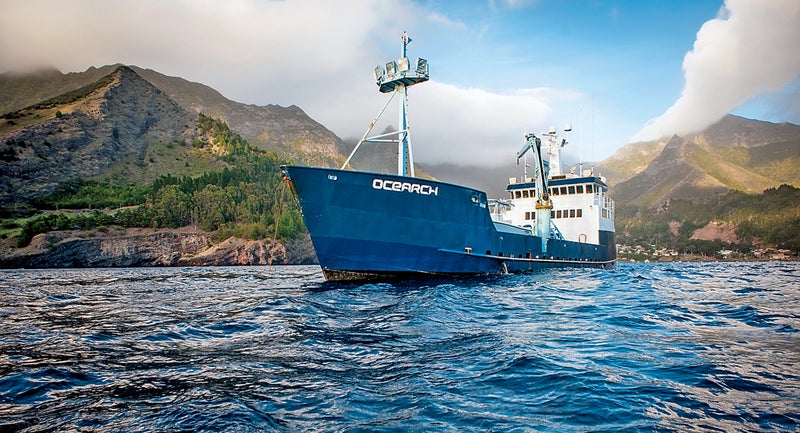
The adrenalized elements, including high fives when a fish came on deck, angered animal lovers. Things got worse when the group foul-hooked a great white in the , off the coast of San Francisco, where Domeier had secured a permit to study sharks. On the team’s first day of fishing, a male shark named Junior swallowed a hook baited with salvaged whale meat. It lodged in the back of his mouth, and McBride had to reach through the shark’s gills with bolt cutters to get it out. The government temporarily suspended Domeier’s permit. They were eventually allowed to tag one more shark, after which Fischer yelled, on camera, “Fucking A, man! That is what we do! We needed that one like we never needed a shark in our life, and we went out and did it together!”
Junior lived, his signal pinging in for three years after the Farallones expedition, but animosity over Fischer and his crew’s techniques began to simmer. “They left a sour taste in a lot of people’s mouths out here,” says , a Bay Area biologist and founder of the conservation group .
Domeier and Fischer’s partnership ended shortly thereafter, when Fischer asked the scientist to sign over partial ownership of his tagging data so that he could post it online. “I wanted to give the data away, and he wanted to hold onto it,” Fischer says. Domeier maintains that the request was outlandish. “Fischer has repeatedly denounced me in public for ‘hoarding data,’ ” he wrote in an e-mail. “I have to call bullshit on that.… Scientists work in a world where we are measured by the value of our intellectual property. The best ideas are the ones that attract funding and lead to groundbreaking, publishable results. Fischer latched onto one of my ideas, and it has done well for him.”
In 2011, National Geographic didn’t renew Shark Men for a fourth season, but the next year Fischer sold it to the History Channel, which renamed it Shark Wranglers. He headed to South Africa, teaming up with local biologists to tag 43 sharks. About a week into the expedition, Fischer and McBride suffered an ignominious first: they killed a shark, a 15-foot female named Maya that left the platform lethargically and sank to the bottom. Shortly thereafter, their tagging permit was again suspended when a local activist group charged that a fatal shark attack some 60 miles from where Fischer and McBride had been working was due to the team’s chumming. Despite the drama—Maya’s demise and the loss of the permit were both featured prominently on Shark Wranglers—the show’s ratings faltered.
“I realized that I had to figure out a way to transcend TV,” Fischer says, “before TV canceled us.”
The sun was blazing, the beer was flowing as liberally as the chum, and white sharks were hungry. It was August 2013 and a clear day off Cape Cod’s Monomoy Island, an uninhabited patch of sand that’s become a major gray seal breeding ground—and, consequently, a white shark magnet. I was on board the Ocearch, along with a camera crew from NBC, a reporter from The New Yorker, and a host of local media, plus roughly a dozen scientists representing seven institutions.
Ocearch’s publicity director gathered the press and said, “We have literally tens of thousands of news outlets all over the world that are standing by for us to get them this footage, so they don’t like to get scooped.” Everyone signed forms saying we wouldn’t take photos. Fischer stood up and explained the Ocearch approach. “I can do what I think is best for the ocean all the time,” he declared, his voice rising to reality-TV volume. “I don’t have to fight with Captain Brett for ratings like some derelict in a TV show!”
Fischer was feeling triumphant. It was in this same location, almost a year earlier, that he had transcended TV. When the History Channel canceled Shark Wranglers, in August 2012, he reached out to a leading Massachusetts shark scientist named Greg Skomal and sunk his last $500,000 into an expedition to study the resurgent great white population off Cape Cod.“I thought, Fuck it,” he recalls. “Let’s go solve the mystery of Jaws.”
Fischer thought it was Ocearch’s last trip. He and his crew wore the gear of the companies he relied on, including Caterpillar. (He uses the company’s engines in the boat.) On September 17, 2012, McBride caught a 3,500-pound female great white, which Fischer dubbed Mary Lee, after his mother. During the next three months, images of the shark, along with Caterpillar’s logo, and on CBS, Fox, and NBC. Fischer had a lightbulb moment and pitched Caterpillar’s marketing team on a sponsorship. The company bit, agreeing to a three-year, multimillion-dollar contract.
Now, almost a year later, Fischer was hoping for an encore. Around 2 p.m., he got it. The radio crackled: “Hooked up! Hooked up!” came Fischer’s voice from the Contender. People jockeyed for space near the platform as the other boat came into view. Behind it were a cluster of buoys and a slate gray dorsal fin knifing through the water. “No cameras! No cameras!” howled members of Ocearch’s press team.
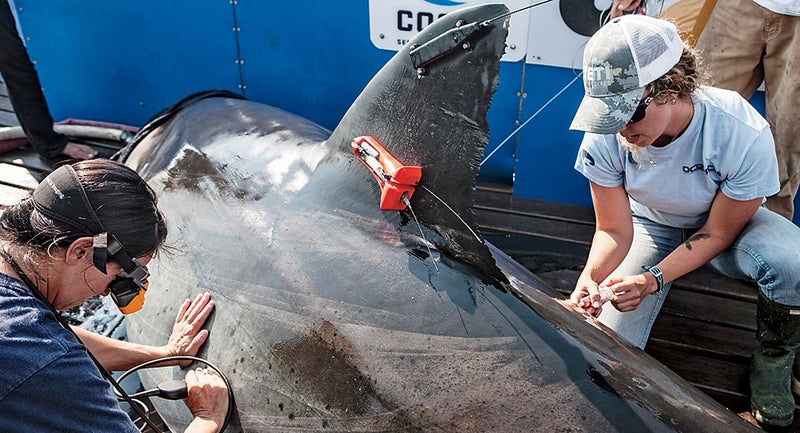
As the Contender led the shark toward us, the fish rolled, evading the platform. A thin stream of blood ran from its mouth, mixing with sea foam. The Contender made another lap. This time, McBride got the shark on the lift. “No cameras!” yelled the press staff. McBride hopped alongside the shark, water up to his shoulders, ran a hose pumping sea-water through the fish’s gills, and draped a black cloth over its eyes. The platform rose out of the water, and about ten scientists descended to take blood samples and affix tags. The shark, a juvenile female, was just shy of 13 feet long and 1,400 pounds. She thrashed once, nearly knocking a scientist over, then calmed, as if napping. Fifteen minutes after arriving in the lift, she was loaded with electronic jewelry.
Fischer stood in the lift, jeans soaked, and said, “The first diesel engine made by Caterpillar was named Betsy. So this shark will be named Betsy!” The platform lowered as McBride grabbed Betsy by the tail and gave her a shove. She shook her tail, slid slowly forward, and then, once she was five feet underwater, disappeared.
The next day, Cape Cod icon (and current Connecticut state senator) Ted Kennedy Jr. came on board. Fischer told a few members of Kennedy’s party, “My biggest problem is people think I just catch sharks. This is only the beginning. I want to crowdfund Fortune 500 companies to get plastic off the planet. We should be able to do that.”
I spoke with Fischer a little while later on a couch on deck while his daughters took turns jumping on his lap. “This is social entrepreneurism at its finest,” he said. “It’s the Google model: create content, give it away, and create scale, then monetize the scale. We leverage the news media as our content distributor.”
He looked at me and laughed: “I’m leveraging you right now, bro!”
Sharks sell, and the people who study them can’t stand all the commerce: Shark Week, Shark Tank, Sharknado. Indeed, scientists’ inherent distaste for salesmanship is at the root of their concerns about Ocearch. Fischer’s expeditions offer tantalizing research opportunities, but you have to embrace the hype.
“I think Chris Fischer is a remarkably media-savvy individual,” says , a marine ecologist and conservationist. “He’s aware of the power of video. And I worry when conservation gets couched as conservation-brought-to-you-by-Chris-Fischer.” MacPherson is one of a number of respected scientists who wonder whether the additional data brought by SPOT tags is really worth the risk of lifting sharks out of the sea. “It seems to me that is wholly playing to the camera,” he says of Ocearch’s methods. “If more viewership means more support, great. But if you’re doing it for sexy visuals, cop to it, man.”
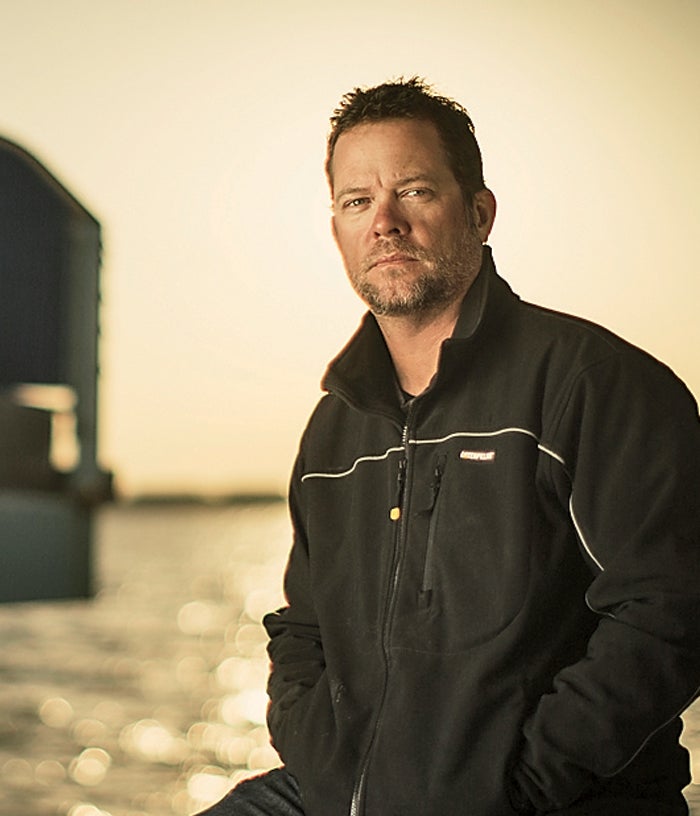
“Fischer is turning something that’s not kitchen-table conversation into something that people pay attention to,” says , senior director for conservation resources at the World Wildlife Fund. “That is awesome, and he should be commended. But you have got to be careful that you’re not equating stories with science.”
Parrish notes something that many Ocearch observers bring up: the lack of peer-reviewed papers that have come out of the group’s expeditions. Only eight have been published, six of them by Domeier.
According to numerous scientists who have worked with Ocearch, more studies are in the works. Nick Whitney, of the Mote Marine Laboratory, is studying the speed at which white sharks rise and descend through the water column, something he was able to do only by teaming up with Ocearch to attach accelerometers to their dorsal fins. Alex Hearn, a biologist who worked with Ocearch in the Galápagos, told me, “I’ve been tagging sharks for ten years now, and I’m learning from those guys.” Even those who’ve had a beef with Fischer say the science is useful. , a leader in the field who teaches at the University of California at Davis and is the author of , recently resolved a financial dispute with Ocearch over what he says are unpaid dues from the final season of Shark Men. Still, he says he’s close to publishing a major paper on sharks’ use of volcanic seamounts for navigation, based in part on data he collected with Ocearch in the Eastern Pacific.
As for lifting the animals out of the water to study them, researchers who’ve worked with Ocearch believe the risk is worth it. Hueter, Mote’s director, points to Ocearch’s track record: one dead shark and 102 SPOT trackers still providing data. “I’m sorry, but in science you can’t do anything and have that kind of success now,” he says.
[quote]“It's the Google model,” explained Fischer. “Create content, give it away, and create scale, then monetize the scale. We leverage the news media as our content distributor.” He looked at me and laughed: “I'm leveraging you right now, bro!”[/quote]
Still, Fischer tends to oversell his impact. To hear him tell it, everything Ocearch does is “groundbreaking” and—a favorite word—“disruptive.” The consensus among the scientists I spoke with is that Fischer and his team have fueled a growing body of solid studies that are helping advance our understanding of sharks. While he never misses an opportunity to plug his sponsors—and Ocearch allows Caterpillar to review social-media videos before they’re posted—researchers insist that none of this compromises the quality of the data. Ocearch wouldn’t show me the agreement researchers sign, but several I spoke to told me that Ocearch is allowed to post any of their tracking data on its website, while the scientists receive a password giving them access to every tag the group has ever put out. They also agree to credit Ocearch in any published studies.
Meanwhile, Fischer has proved to be a master at soliciting positive media coverage. Early last year, I set up a Google news alert for “great white shark.” For months afterward, I was inundated with stories about Ocearch’s sharks. Mary Lee was south of Key West! Betsy was near Texas! Katharine got so popular she crashed Ocearch’s site!
That ability to engage the public makes Fischer more like Cousteau than his detractors want to admit. The Frenchman was famously brash, deploying showmanship to advance a conservation message. He was not a trained scientist and considered data useful but secondary to emotional communication. He also funded his work through films and had to overcome early mistakes—in a climactic scene in , Cousteau’s first mainstream hit, his crew angrily gaffes a bunch of sharks, hauls them on board, and hacks them to death with an ax. Later projects, like the aquatic-living experiment , resembled underwater reality TV. As Fischer told me, “Cousteau did not have a Caterpillar deal.”
Tsunamis are surges of seawater that manifest themselves in shallow water. A boat at sea is a good place to be during such an event—in deep water, you sometimes don’t even feel the wave. But a boat immediately offshore is not a good place to be. The Ocearch was anchored near Selkirk in just 110 feet of depth when the quake hit, at 8:46 P.M. Fischer heard the news about a half an hour later. He huddled with McBride to make a hasty plan, in which the speedy Contender would lead us out to a safe depth while the Ocearch, which can only move nine knots per hour, chugged behind.
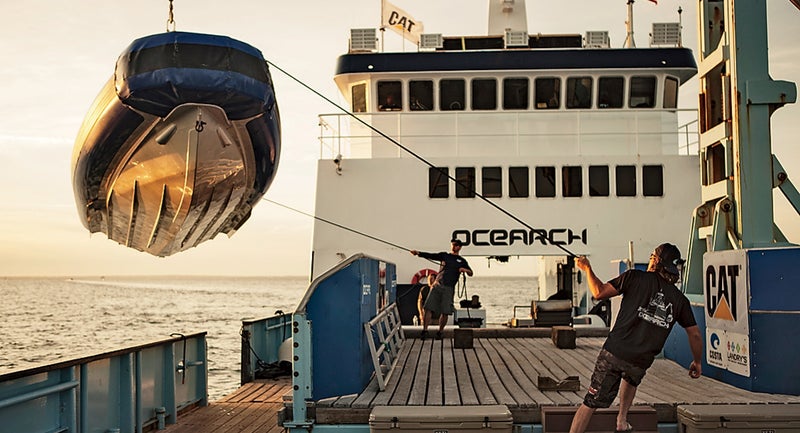
McBride and the first mate, Goggins, prepared the Contender for its run, while the rest of the crew organized supplies. The filmmakers, cameramen, scientists, and I were told to huddle in the galley. Imagining what might happen if the ship overturned, I took off my boots. As the last bit of sunlight faded, we stared out the window at the blueing horizon while a Chilean biologist translated the Navy’s radio transmissions: “Eight-point-two! A thousand feet deep! We will feel the wave at 11:06! This is my first tsunami!”
Rudy Ortiz Aravena, the lodge owner from Crusoe with the Viking tattoo, stood outside the galley with his head in his hands. When the 2010 tsunami had struck, it arrived in the middle of the night without warning. His son woke him up after seeing a glass of water quaking, like in the movies. Aravena jumped into his jeep and rushed around, gathering friends and family before driving to high ground. He couldn’t find them all. In the after-math, Aravena put on his scuba gear and retrieved bodies, including his grandfather; the wave swept his grandmother, niece, and nephew out to sea.
“Tsunami,” he whispered. “Tsunami tsunami tsunami tsunami.”
The Contender reached 850 feet of depth, and Fischer radioed McBride and Goggins to come back in.
Fischer went down on deck, and one of the cameramen trained a camera on him. “Chris,” he said, “what are you doing right now?”
“Right now we have a tsunami warning,” Fischer boomed. “The wave is supposed to get here in ten or twelve minutes. We’re moving out to deep water. I’m trying to get my last two guys on this ship!”
The Contender arrived, and soon we were all squeezed into the galley. Vince Cisclo, the boat’s engineer, started his head count. A satellite phone was passed around: one call each, to tell our families we were OK.
An hour passed, then two. We reached 3,000 feet of water. Eventually, the Chilean navy called. The warning was over. A six-foot wave had hit the mainland, but no tsunami materialized in the islands.
A few of us walked down on deck. A pack of cigarettes made the rounds, and someone cranked up Capital Cities’ “Safe and Sound.” Rudy circled the ship, hugging people. I saw a whiskered biologist from the Universidad Austral named Julio Lamilla, whom Fischer referred to as the godfather of Chilean shark science and whom everyone else simply called Professor, hanging out on the starboard rail. He pointed and winked. In the sodium lights, a silver shape broke the surface of the water just off the bow: a dolphin leading the boat out. There was something in the water after all.
Contributing editor Abe Streep () wrote about rebooting your career in November.


